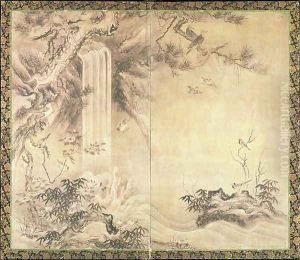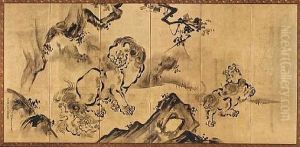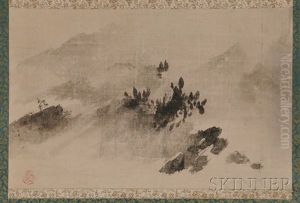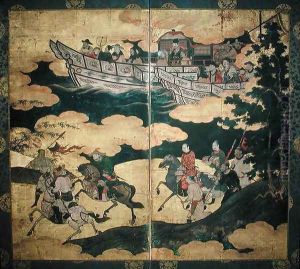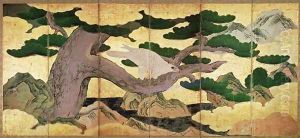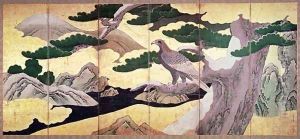Eitoku Kano Paintings
Eitoku Kano, born in 1543, was a prominent Japanese painter of the Azuchi-Momoyama period. He hailed from the esteemed Kano school of painting, which had been established by his grandfather Kano Masanobu and further developed by his father Kano Motonobu. The Kano school was renowned for its contributions to the world of Japanese art, especially for serving the needs of the ruling class with paintings that often adorned castles, temples, and residences of the nobility.
Eitoku's works are particularly noted for their boldness and vigor, embodying the energy and ambition of the warlords of his time, especially Oda Nobunaga and Toyotomi Hideyoshi, under whose patronage he worked. He was adept at large-scale screen paintings, fusuma (sliding door) panels, and wall paintings. His style is characterized by dynamic compositions, robust figures, and innovative use of space.
Among Eitoku's most significant contributions was his role in the development of the Kano school's characteristic tarashikomi technique, wherein a second layer of paint is applied before the first layer dries, creating a dripping effect. This technique added a sense of immediacy and spontaneity to his paintings.
Eitoku's legacy is substantial, as he set the tone for what would be considered the grand and majestic style of the Momoyama period. His influence extended to his many apprentices and followers, who continued the Kano tradition, ensuring that the school remained dominant in Japanese art for centuries.
Tragically, Eitoku's life was cut short when he died at the age of 47 in 1590. Despite his relatively brief career, he left behind a body of work that continues to be celebrated for its artistic excellence and historical significance.
